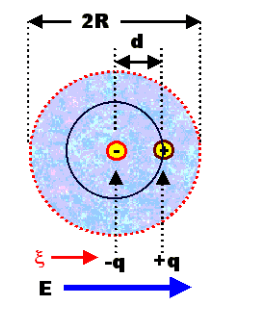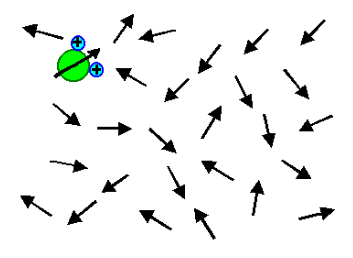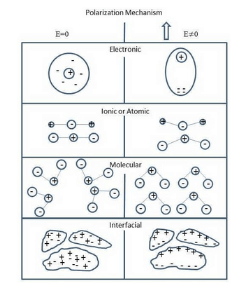Bulb Filament Material: What You Need to Know
A bulb filament is a thin wire that glows when an electric current passes through it. It is the main component of an incandescent light bulb, which produces light by heating the filament to a high temperature. The filament material must have certain properties to withstand the heat and produce a bright and stable light. In this article, we will explore the history, characteristics, and uses of different bulb filament materials, as well as the advantages and disadvantages of incandescent light bulbs.
What is an Incandescent Light Bulb?
An incandescent light bulb is defined as an electric light that produces light by heating a wire filament to a high temperature until it glows. The filament is enclosed in a glass bulb that contains a vacuum or an inert gas to prevent oxidation and evaporation of the filament material. The bulb is connected to a power supply by two metal contacts at the base, which are attached to two stiff wires that hold the filament in place.
The principle of incandescent lighting was discovered by many inventors in the 18th and 19th centuries, but the first practical and commercially successful incandescent light bulb was developed by Thomas Edison in 1879. He used a carbonized bamboo filament that lasted for about 1200 hours. Later, he improved his design by using a carbonized cotton thread filament that lasted for about 1500 hours.
What are the Properties of a Good Bulb Filament Material?
The bulb filament material must have the following properties to function well as an incandescent light source:
High melting point: The filament must be able to withstand temperatures of up to 2500°C without melting or breaking.
Low vapor pressure: The filament must not evaporate or sublimate at high temperatures, which would cause the bulb to blacken and reduce its brightness and efficiency.
Free from oxidation: The filament must not react with oxygen or other gases in the bulb at high temperatures, which would cause it to corrode or burn out.
High resistivity: The filament must have a high electrical resistance, which means it opposes the flow of electric current. This causes it to heat up and emit light when a current passes through it.
Low thermal coefficient of expansion: The filament must not expand or contract significantly when heated or cooled, which would cause it to deform or break.
Low-temperature coefficient of resistance: The filament must not change its resistance significantly when heated or cooled, which would affect its current and brightness.
High Young’s modulus and tensile strength: The filament must be able to withstand the mechanical stress caused by its own weight and vibration without sagging or snapping.
Sufficient ductility: The filament must be able to be drawn into a very thin wire without breaking or cracking.
Ability to be converted into a shape of filament: The filament must be able to be formed into a coil or a double coil, which increases its surface area and brightness without increasing its length or resistance.
High fatigue resistance: The filament must be able to endure repeated heating and cooling cycles without weakening or failing.
What are the Types of Bulb Filament Materials?
Different types of materials have been used for making bulb filaments over the years. Some of these materials are listed below:
Carbon
Carbon was the first material used for making bulb filaments by Edison and other inventors. It has a high melting point (3500°C), low vapor pressure, high resistivity (1000-7000 µΩ-cm), and low-temperature coefficient of resistance (-0.0002 to -0.0008 /°C). However, it also has low oxidation resistance, a high thermal coefficient of expansion (2 to 6 /K), low tensile strength, and a high blackening effect on the bulb. Carbon filaments have an efficiency of about 4.5 lumens per watt (lm/W) and an operating temperature of up to 1800°C.
Carbon is also used for making pressure-sensitive resistors, which are used in automatic voltage regulators, and carbon brushes, which are used in DC machines.
Tantalum
Tantalum was introduced as a bulb filament material by Werner von Bolton in 1902. It has a high melting point (2900°C), low vapor pressure, high resistivity (12.4 µΩ-cm), and low thermal coefficient of expansion (6.5 /K). However, it also has low oxidation resistance, high-temperature coefficient of resistance (0.0036 /°C), low tensile strength, and low efficiency (3.6 W/candle power). Tantalum filaments have an operating temperature of up to 2000°C.
Tantalum is not widely used as a bulb filament material anymore due to its low efficiency and scarcity.
Tungsten
Tungsten is the most commonly used material for making bulb filaments today. It was first used by William D. Coolidge in 1910. It has a very high melting point (3410°C), low vapor pressure, high resistivity (5.65 µΩ-cm), high tensile strength, high oxidation resistance, and low blackening effect on the bulb. However, it also has a high-temperature coefficient of resistance (0.005 /°C) and a high thermal coefficient of expansion (4.3 /K). Tungsten filaments have an efficiency of about 12 lm/W and an operating temperature of up to 2500°C.
Tungsten is also used as an electrode in X-ray tubes and as an electrical contact material in certain applications.
How are Bulb Filaments Made?
Bulb filaments are made by various processes depending on the material used. Some of these processes are described below:
Carbon
Carbon filaments are made by carbonizing organic materials such as bamboo, cotton thread, paper pulp, etc., in an inert atmosphere at high temperatures (1000-1500°C). The carbonized material is then stretched into thin wires and wound into coils.
Tantalum
Tantalum filaments are made by powder metallurgy techniques. Tantalum powder is mixed with a binder and pressed into rods or wires. The rods or wires are then sintered at high temperatures (2000-2500°C) in a vacuum or inert gas atmosphere. The sintered rods or wires are then drawn into thin wires and wound into coils.
Tungsten
Tungsten filaments are made by several steps:
Tungsten ore is extracted from wolframite or scheelite minerals and converted into tungstic acid or ammonium para tungstate.
Tungstic acid or ammonium para tungstate is reduced with hydrogen gas to form tungsten powder.
Tungsten powder is mixed with a binder and pressed into rods or wires.
The rods or wires are sintered at high temperatures (2000-3000°C) in a vacuum or inert gas atmosphere.
The sintered rods or wires are swaged (hammered) into thinner rods or wires.
The swaged rods or wires are drawn through diamond dies into very thin wires (10-50 µm).
The thin wires are annealed (heated) at moderate temperatures (1000-1500°C) in hydrogen gas to improve their ductility and strength.
The annealed wires are wound into coils or double coils.
What are the Advantages and Disadvantages of Incandescent Light Bulbs?
Incandescent light bulbs have some advantages and disadvantages compared to other types of light sources, such as fluorescent lamps, LED lamps, etc. Some of these are listed below:
Advantages
They produce warm white light with a good color rendering index (CRI).
They are cheap and easy to manufacture and use.
They can be dimmed easily without affecting their color temperature.
They can operate at low voltages and frequencies without flickering.
They can withstand shocks and vibrations better than other types of lamps.
Disadvantages
They have low efficiency (10-20 lm/W) compared to other types of lamps (50-200 lm/W).
They have short lifespan (1000-2000 hours) compared to other types of lamps (10,000-50,000 hours).
They generate a lot of heat (90% of energy is wasted as heat) which can increase cooling costs and fire hazards.
They consume more electricity than other types of lamps, which can increase greenhouse gas emissions and environmental impact.
They contain fragile components such as glass bulbs and thin filaments which can break easily.
Conclusion
Bulb filaments are essential parts of incandescent light bulbs that produce light by heating up when an electric current passes through them. Different materials such as carbon, tantalum, and tungsten have been used for making bulb filaments over the years with varying properties and performance. Tungsten is the most widely used material today due to its high melting point, low vapor pressure, high resistivity, high oxidation resistance, and low blackening effect on the bulb. However, incandescent light bulbs also have some drawbacks, such as low efficiency, short lifespan, high heat generation, high electricity consumption, and fragile components. Therefore, they are being replaced by more energy-efficient and environmentally friendly alternatives, such as fluorescent lamps, LED lamps, etc., in many applications.
Statement: Respect the original, good articles worth sharing, if there is infringement please contact delete.
Welcome to our electricity community! Established to facilitate the exchange and cooperation in the electricity industry and bridge professionals, enthusiasts, and related enterprises.




